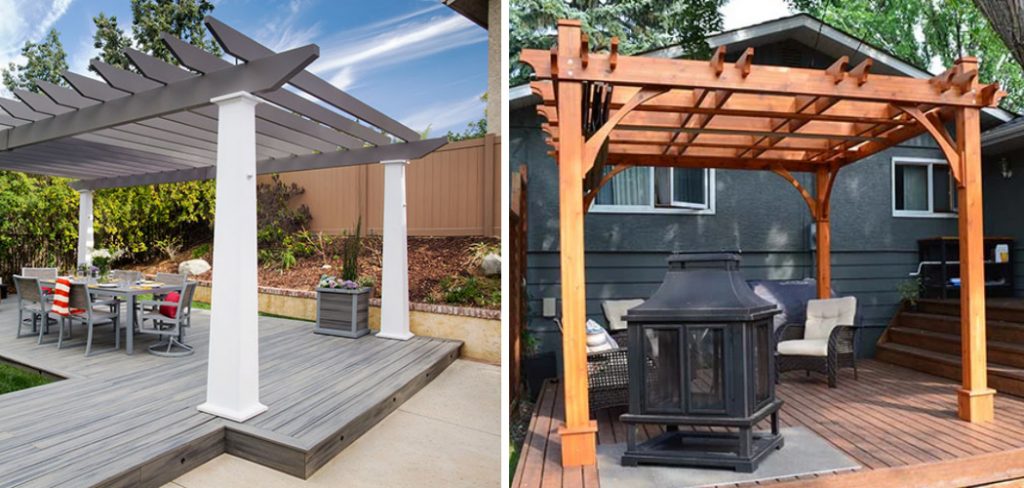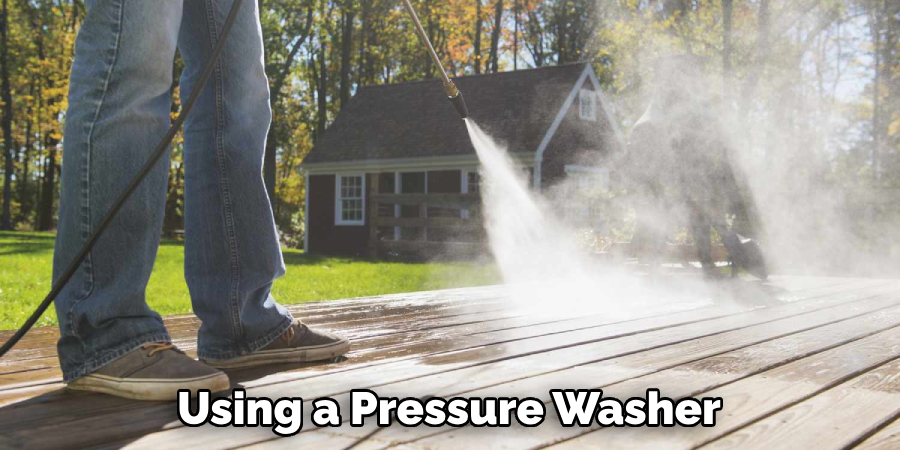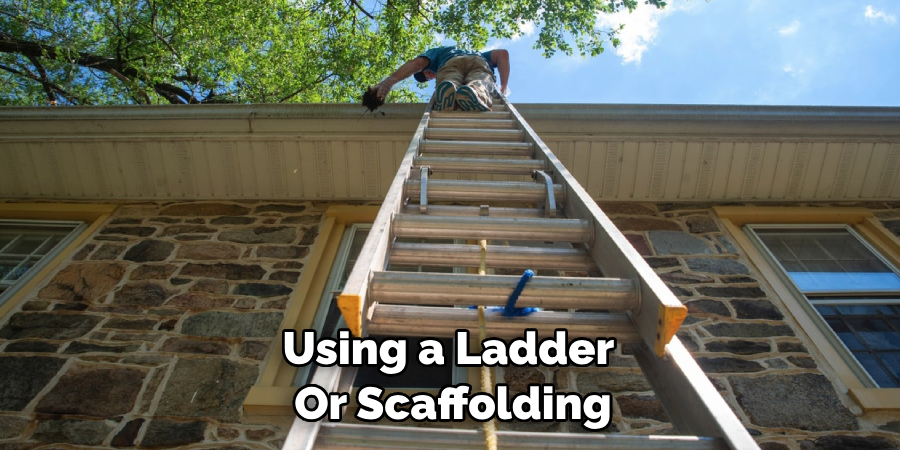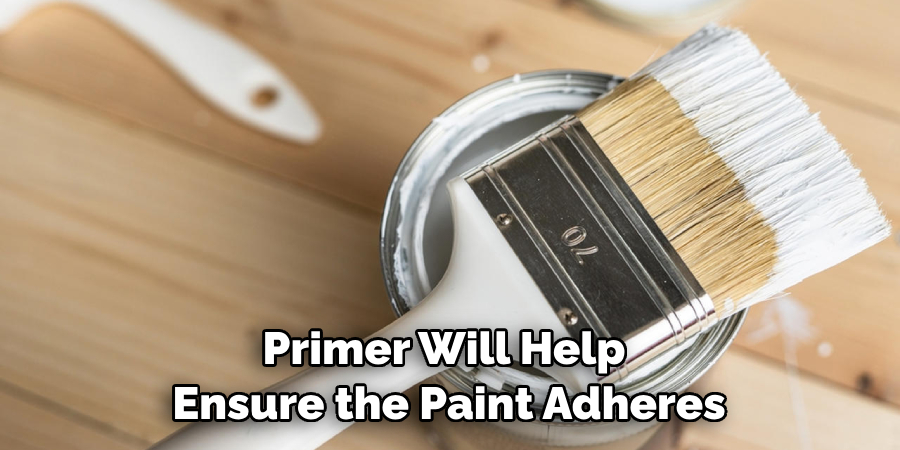Painting your pergola is a great way to add a polished look to your outdoor space. Whether you’re looking for a vibrant pop of color or just want to preserve the wood, painting your pergola can help protect it from the elements and give you an eye-catching addition to any backyard.

Painting a pergola offers many advantages, including improving your outdoor space’s overall look and feel. It is also an excellent way to protect your pergola from weather elements such as rain, sun, and dust. Additionally, painting a pergola can add to its lifespan by helping to shield it from UV rays and moisture damage. Read this blog post to learn how to paint a pergola.
Tools You Will Need
- Primer
- Paint roller and pan
- Paintbrush (2 inch) for edges and corners
- Drop cloths
- Painter’s tape
- Sandpaper (80 grit)
- Respirator mask and safety glasses
- Ladder or tall step ladder
- Extension pole if high ceilings
- Rags or paper towels
Step-by-Step Processes for How to Paint a Pergola
Step 1: Inspect Your Pergola
Check your pergola for any damage or rot before starting the job. If you notice any problem areas, repair them before painting. Using a pressure washer and soap, thoroughly clean the surface of your pergola to remove dirt, mildew, and other debris. Allow it to dry completely before proceeding.
Step 2: Prepare the Area
Cover any surrounding plants or furniture with tarps and remove any outdoor items in the way. Make sure to wear protective clothing and eye protection during the painting process. Lightly sand down any rough areas of the pergola’s surface using sandpaper. This will help the paint adhere better and provide a more even finish.

Step 3: Prime the Pergola
Apply an exterior wood primer to the entire surface of your pergola using a brush or roller. Allow it to dry completely before proceeding. Using a brush or roller, apply two coats of exterior paint in the color of your choice. Allow each coat to dry completely before applying the next one.
Step 4: Touch Up Areas
If you notice any areas that need touching up, use a small brush and the same paint to make any necessary adjustments. Once you’ve finished painting, use a sealant to protect the finish and help it last longer. Make sure to apply this in an even coat for optimal protection.
Step 5: Clean Up Your Area
Remove any tarps or furniture covers and clean up all equipment used during painting. Dispose of any leftover paint properly.
Now that you’ve finished painting your pergola take some time to enjoy your new look and admire the work you just did. With proper care and maintenance, your pergola should last for years.
Safety Tips for How to Paint a Pergola
- Always wear protective clothing and equipment, such as gloves, goggles, and a face mask.
- Keep any children or pets away from the area while you are painting.
- Take appropriate safety precautions when using a ladder or scaffolding to reach higher pergola areas.
- When using power tools or sanders, do not wear loose clothing, and make sure to keep your hair tied back.
- Ensure you have ample ventilation when using paint or other chemicals in an enclosed space.
- Dispose of all leftover paint according to the manufacturer’s instructions. Do not pour it into a drain or on the ground.
- Consider investing in a power washer to help make cleaning the pergola easier. This will also save you time when preparing it for painting.

By following these safety tips, you can ensure that your painting job is completed safely and successfully. It’s important to take the necessary precautions when dealing with potentially hazardous materials to avoid any potential accidents or injuries.
How Should You Prepare the Pergola for Painting?
Preparing your pergola for painting is an important step that shouldn’t be overlooked. Before beginning the job, inspect the structure for any damage or rot and repair it as needed. Additionally, use a pressure washer and soap to thoroughly clean the surface of your pergola to remove dirt, mildew, and other debris.
Once you’ve completed these steps, it’s time to start sanding and priming the surface. Use sandpaper to lightly sand down any rough pergola, areas and then apply an exterior wood primer using a brush or roller. Allow this to dry before proceeding with painting.
How Long Does It Typically Take to Paint a Pergola?
Painting a pergola can take anywhere from one to several days, depending on the structure size and the level of detail you want to achieve. Generally speaking, you should plan for a minimum of two to three days to ensure that the job is done properly.
It’s important to note that painting an outdoor structure, such as a pergola, can be a time-consuming job. Consider the size of the pergola and any intricate details that you want to make sure are painted properly. If it’s a large structure, you’ll likely need more time to finish the job than if it were smaller.
Are There Any Special Techniques for Painting a Pergola?

Painting a pergola is different from painting any other wood-based structure. However, there are some tips and tricks you should keep in mind when tackling this project. First, make sure to thoroughly clean your pergola before painting it. This will help remove dirt and debris so the paint can adhere better to the surface. If needed, you can use a pressure washer to make sure the entire surface is clean and free of any dirt or grime.
Once your pergola is dry, it’s time to apply the primer. Primer will help ensure the paint adheres well to the wood and prevents peeling and chipping down the line. Make sure to use a paintbrush or roller for an even coat. After the primer has had time to dry, you can add your first coat of paint. Again, use a brush or roller for an even finish. If you’re using multiple colors, wait until each layer is dehydrated before moving on to the next one.
How Can You Avoid Common Painting Mistakes When Working on a Pergola?
To ensure that your pergola painting project goes as smoothly and successfully as possible, you should take a few measures to avoid common mistakes. First, make sure to check the weather forecast before you begin. If it’s going to rain or be excessively windy, you may want to wait for a better day. The paint may dry too quickly if it’s too hot or humid.
Also, make sure you have enough paint and supplies on hand before you get started. If you don’t have enough material mid-way through your project, it can be both time-consuming and costly to acquire more.
Finally, take the time to properly prepare the pergola before adding any paint. Clean the surface, sand it down if needed, and fill in any cracks or chips with wood filler. This will help ensure an even finish that will last for years!
Are There Any Specific Considerations to Keep in Mind When Painting a Pergola?
Yes, there are a few considerations to remember when painting a pergola. When choosing your paint, make sure you choose one that is appropriate for outdoor use and can withstand all weather conditions. Also, if you’re painting the pergola yourself, select a paint with a low-odor formula to minimize fumes.
In addition, plan and ensure you have a drop cloth or other protective covering handy to protect the surrounding area from paint splatters. Finally, if you’re painting a pergola that is already constructed, take extra care when reaching around tight spaces and hard-to-reach places.
Additionally, be sure to use a ladder or other support system to help prevent any accidents. With these tips in mind, you’ll be able to paint your pergola with ease and confidence.

Importance of Painting a Pergola
- Improves the Look: Painting a pergola can improve the look of your garden or patio and boost the overall value of your property.
- Increased Durability: A properly painted pergola will have increased durability against harsh weather conditions, such as heavy rains and strong winds.
- Easier to Clean: Paint makes it easier to clean off any dirt, debris or bird droppings that accumulate on the pergola’s surface.
- Protection from UV Rays: Painting your pergola offers protection from harsh UV rays and prevents the wood from splintering or cracking due to sun damage.
- Reduces Maintenance: Paint helps protect the wood, which requires less maintenance over time.
- Enhances Color: Painting your pergola is a great way to add a touch of color and vibrancy to your outdoor space. You can choose from various colors and shades to make the pergola reflect your unique style.
End of Document
If the job requires extra finishing touches, consider adding sealant to protect against moisture and weathering. A sealant will also help bring out the color and vibrancy of your paint job, making it long-lasting and beautiful.
Additionally, if you’re working with a wood pergola, consider staining the piece to give it an extra sophistication. Staining is also beneficial for preserving the life of the wood itself. I hope reading this post has helped you learn how to paint a pergola. Make sure the safety precautions are carried out in the order listed.

